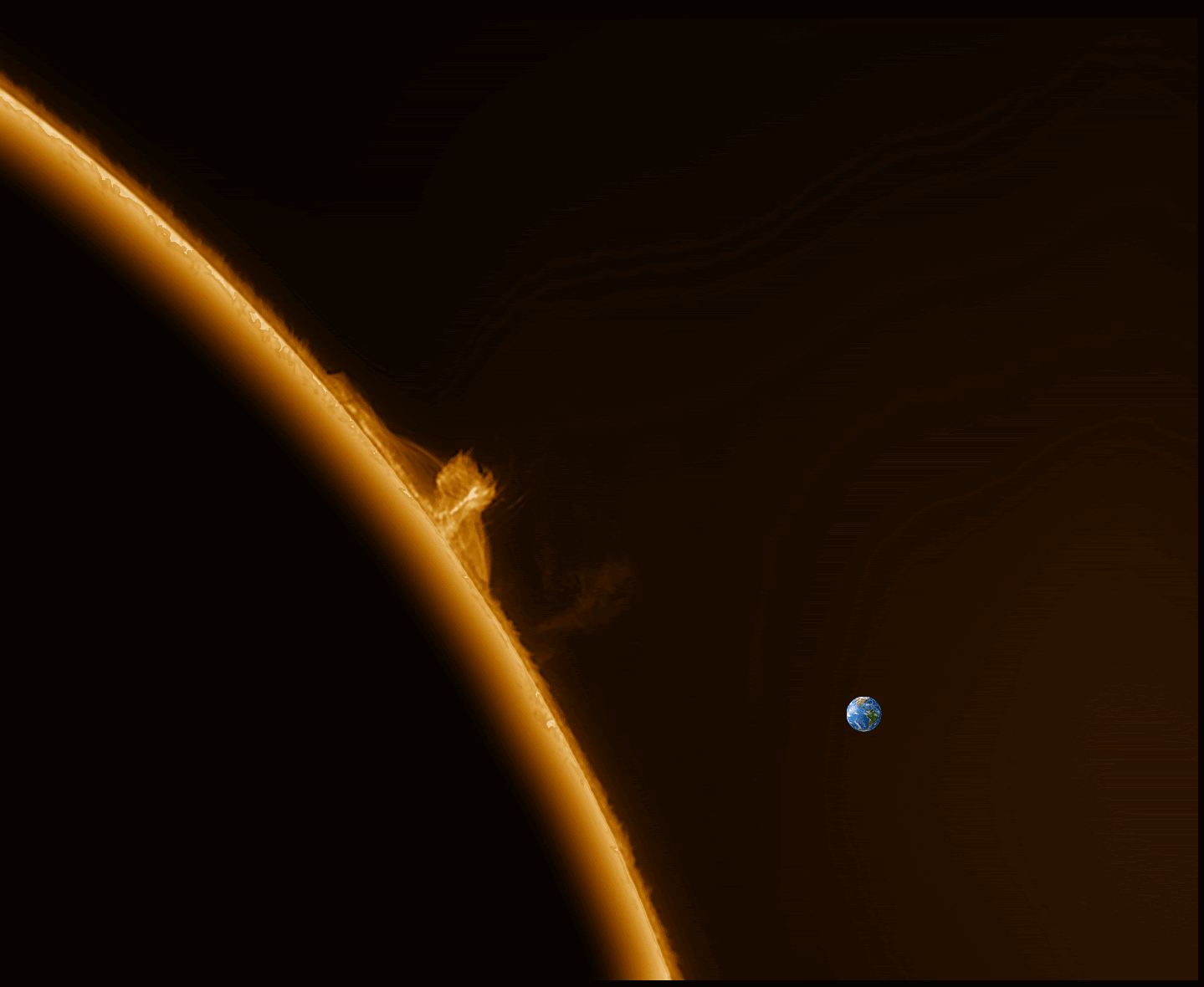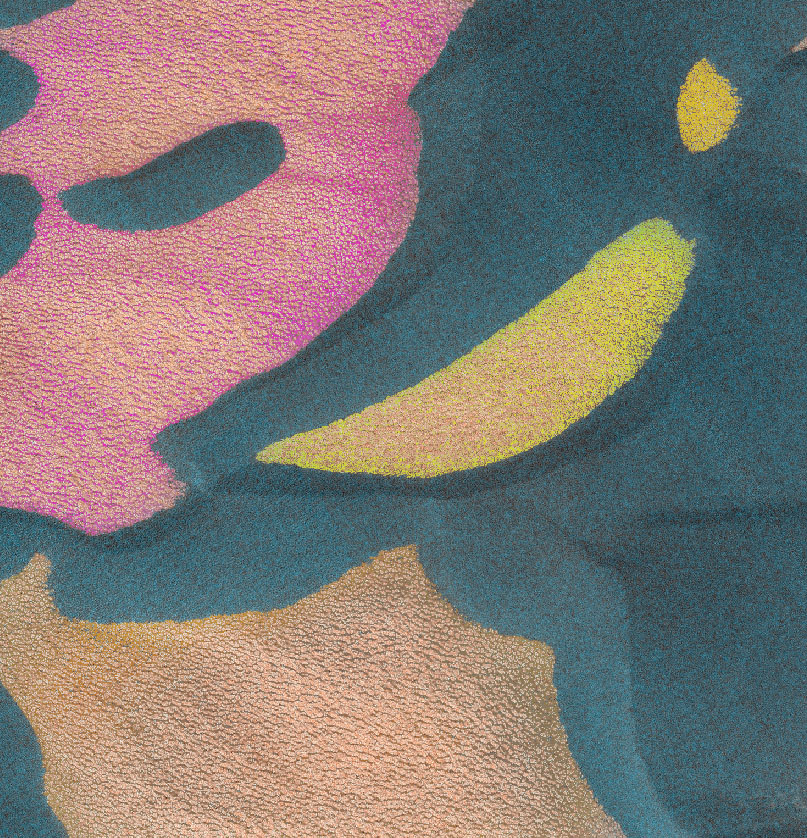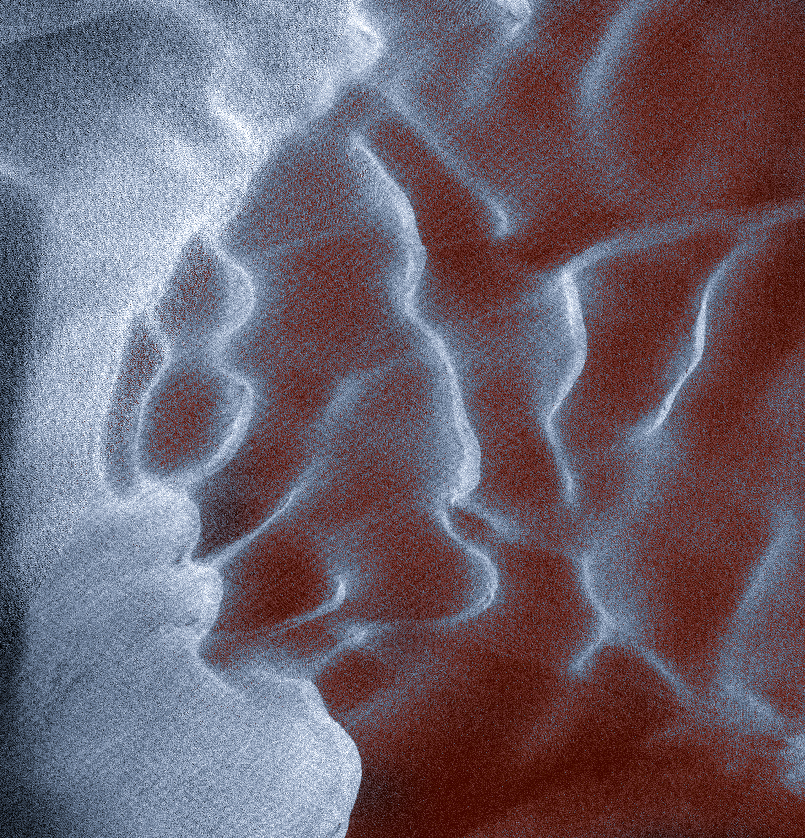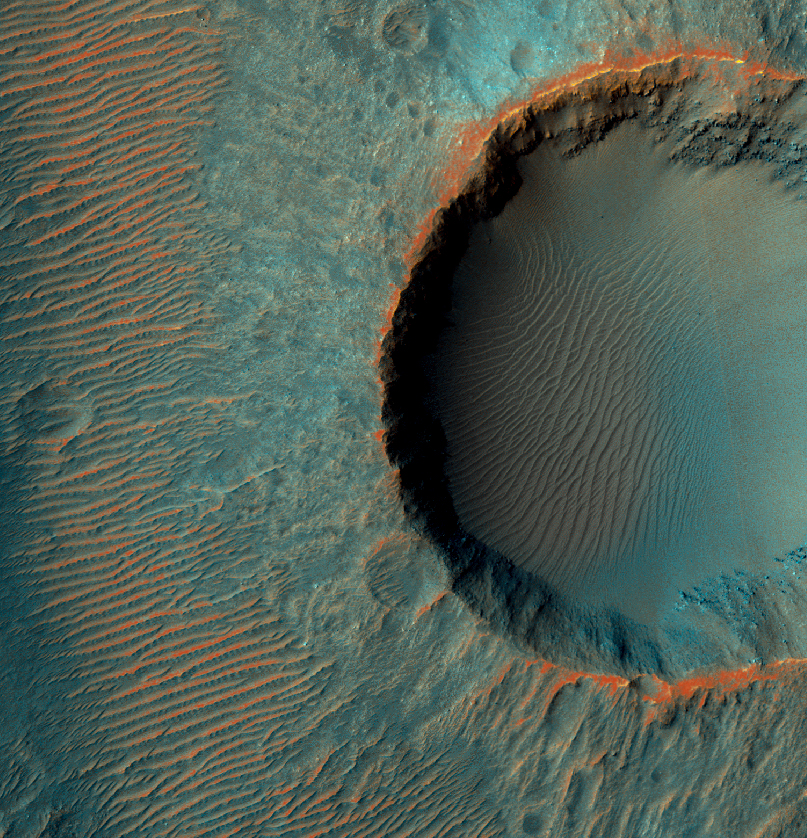By Jett Peters
Last year, while at home in Tennessee, Hawk Wolinski decided to do a solar animation (10 seconds on/10 seconds off) on what appeared to be a random blob on the edge of the sun’s surface: something you would never normally shoot. As if part of a Hollywood script, Hawk left his computer to go get a cup of coffee and returned to find something extraordinary, the blob had moved and doubled in size. You don’t typically see the movement of a prominence. Although they are moving fast, because of their immense size and the tremendous distance, they appear static. In this case, Hawk could see the movement live. Hawk had captured a coronal mass ejection (CME), the CME responsible for the phenomenal auroras that were visible last year. Other than dedicated solar scopes and satellites, or institutional scopes, Hawk may have been the only solar photographer to capture it. Hawk’s animation can be seen below.

That particular animation may have been a once in a lifetime shot, but it illustrates why Hawk enjoys solar photography. Most of the night sky is static: images taken decades, even centuries, apart will appear identical. When looking at the sun, however, every day is different. Hawk has also won an APOD for another solar animation that can be seen at this link.
Hawk first became interested in astronomy when helping a former band member set up a home built telescope at altitude in Colorado. When observing, it was like holy %$*! Wow! He later bought a Celestron 8 and the first thing he imaged was the Ring Nebula, and that was the start of his own explorations.
Hawk’s highly successful career as a keyboardist, songwriter, and music producer (which includes writing the hit song “Ain’t Nobody”) meant some of the places he lived, such as LA, had light polluted skies where following his interest was limiting, but in 2013 he started thinking about astronomy again. Hawk began noticing all of these “coke-a-cola can” cameras and telescopes you can run with a computer. He never looked back.
Although not requiring images from one of his own telescopes, Hawk’s favorite project was a collection of art he created from black and white images taken by the Mars Satellite. NASA’s Mars Reconnaissance Orbiter (MRO) has a 26,000 megapixel camera that takes images of the planet’s surface 24 hours a day. A team at the University of Arizona processes the data and makes the photos publicly available on the HiRISE website. Hawk downloaded the images which allowed him to selectively zoom in, crop, and adjust the color, contrast, sharpness, and temperature to create new images, giving the viewer a new perspective of the planet’s surface. A few examples can be seen below.



In addition to a PlaneWave Delta Rho and a solar instrument Hawk keeps in Australia, Hawk recently installed a Takahashi TOA150 at UDRO. Craig Stocks, the owner of UDRO, was the main reason Hawk chose UDRO as a remote hosting facility. Craig’s knowledge and experience were deciding factors, along with the fact that you could “eat off the floor” at the UDRO’s facility! He intends to use his UDRO system for astrophotography, and perhaps for discovering the occasional comet. Hopefully installing a system at URDO will open another chapter in Hawk’s astronomy journey. Hawk is candid that “he is inherently impatient and this requires a ton of patience!”
